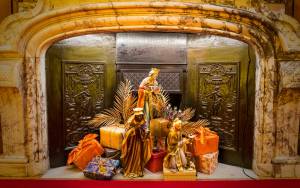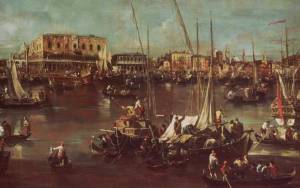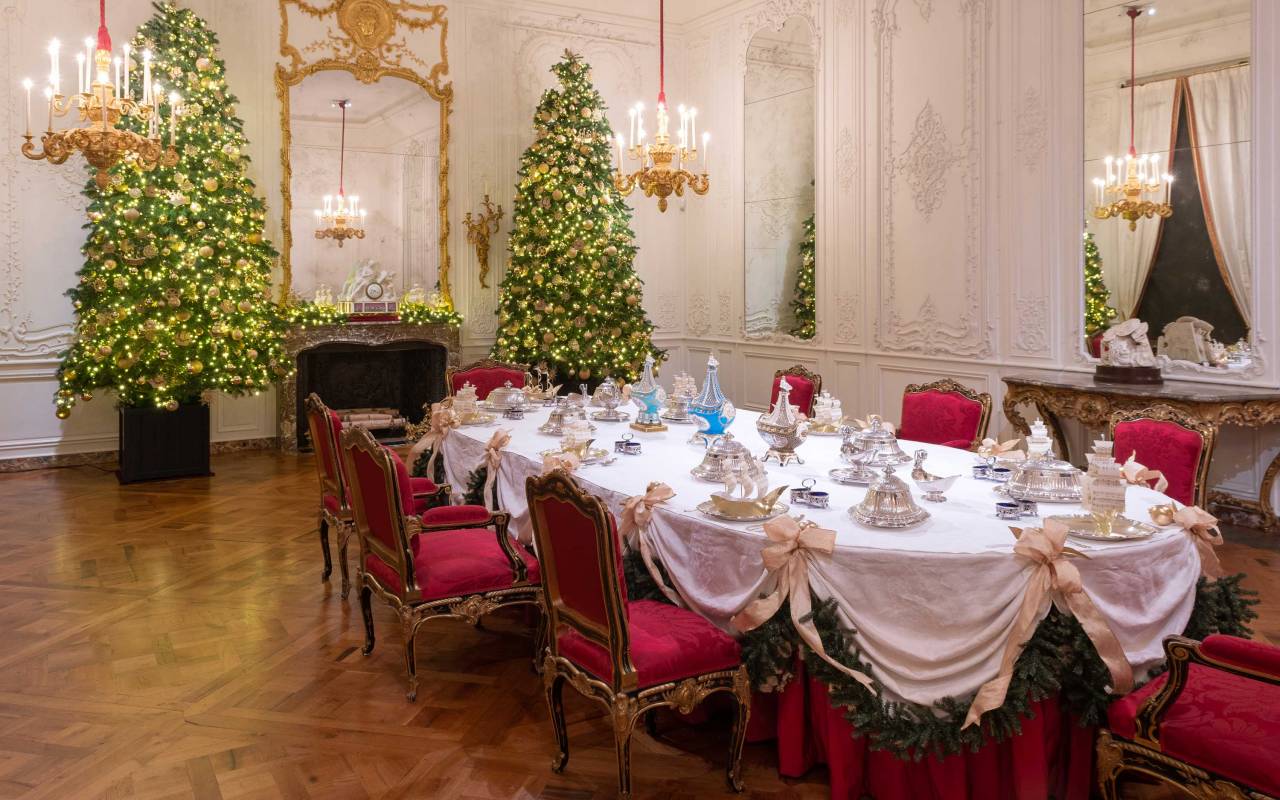
Inspiring a musical Christmas
Aromas of pine needles, spiced mulled wine and roasting chestnuts are not the only goodies offering a sensory extravaganza this Christmas at Waddesdon. Classic carols transform the whole property for the festive season – both inside and out – using particular rooms of the house to stage Waddesdon’s many connections to the world of music.
This year the designer Jane Le Bon celebrates festive carols and Waddesdon’s connection to music with each room inspired by a Christmas classic. For instance, the visit begins with the carol – ‘O Christmas Tree’, based on a German folksong. The lyrics written by Ernst Anschütz in 1824 celebrate the fir tree as a symbol of faithfulness – as seen through the 4.5m fir tree bedecked with a traditional display of glowing candles and garlands.
In Britain, the idea of decorating a tree for Christmas really took off when adopted by Queen Victoria and Prince Albert, who were pictured with their family around a Christmas tree at Windsor Castle in 1848. On Wednesday 14 May 1890, Queen Victoria journeyed to Buckinghamshire for a much anticipated outing to Waddesdon. Here the occasion was marked by the Queen planting a tree in Waddesdon’s grounds, a time honoured custom that has endured to this day when significant visitors, such as heads of states, come to visit.

There is rarely music playing in the Manor today, however when Ferdinand de Rothschild and his sister Alice hosted their great weekend parties, music would have played a big part in their entertaining, and most certainly when the Queen came calling! The Rothschilds were a musical family and have a longstanding interest in music. Taught by some of the world’s leading musicians, several members of the family were composers themselves, like Mathilde de Rothschild (1832-1924), Ferdinand’s sister, being the most significant. She was taught by Frédéric Chopin (1810-1849), whose career was said to have been launched in 1831 following a performance he gave in the salon of Baroness Betty de Rothschild, Mathilde’s aunt, to whom he later dedicated his Waltz in C sharp minor. Two of Mathilde’s published Melodies are displayed in the Bachelors’ Wing alongside a collection of 18th-and 19th-century musical instruments from the collection.

The magical star in the East Gallery highlights links between the enduring festive favourite ‘We Three Kings’ and the two paintings along this gallery by Francesco Guardi (1712-1793). The hymn famously recalls the journey of the three Magi to Bethlehem to offer gifts of gold, frankincense and myrrh to the new-born Jesus, as described in St Matthew’s Gospel. The trade in goods from the east to the west such as the gifts carried by the Magi were part of a complex international trade, with Venice as one of the key ports.

Guardi’s paintings show the bustling activity of traders and merchants carrying out their daily business. From the 13th century, Venice was a hub between Europe and the East, and exotic commodities such as perfumed oil and incense were highly prized in the West.

It is believed that the song, ‘I Saw Three Ships’ referred to ships which took the holy relics of the Magi – the gifts given to the Christ child of gold, frankincense and myrrh – to Cologne Cathedral in the 12th century. The carol is illustrated here at Waddesdon by three Sèvres porcelain ship vases which would have contained not precious relics but pot-pourri. Their shape was so difficult to produce that only ten examples survive today worldwide. Baron Ferdinand owned three of them, uniquely displayed together at Waddesdon.

Jane Le Bon and Waddesdon’s collections team celebrate the longstanding role that music has played in Christmas festivities. Music has been a part of the celebration of Christmas since 4th-century Rome and the singing of carols in English from the early 15th century. Follow the sound of music through our Christmas trail from early Christmas carols such as We wish you Merry Christmas to the modern classics of White Christmas and Do They Know it’s Christmas.
Designed and installed by Jane Le Bon >



